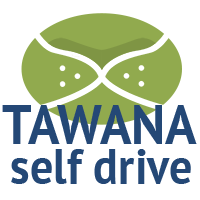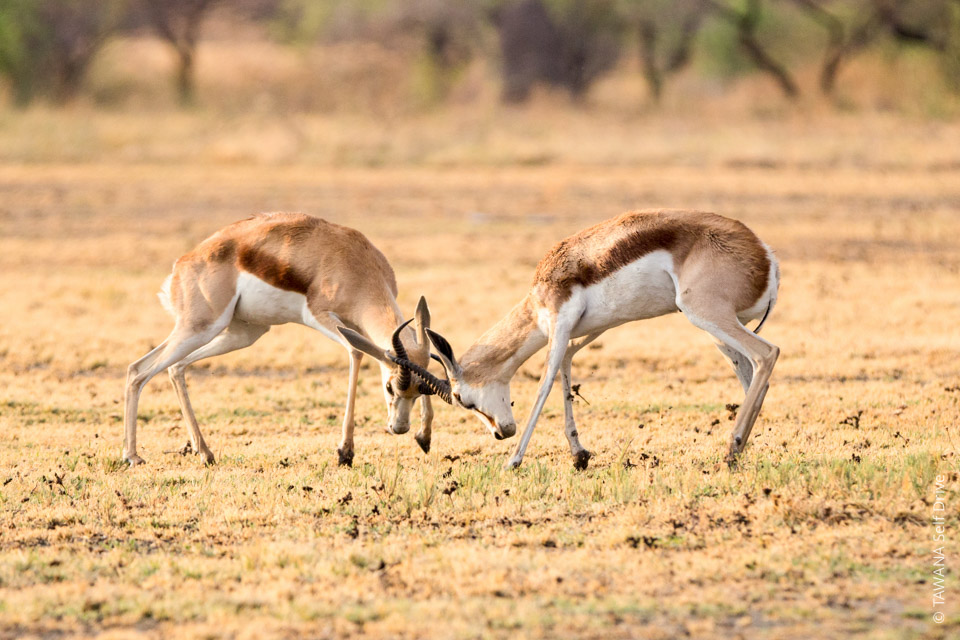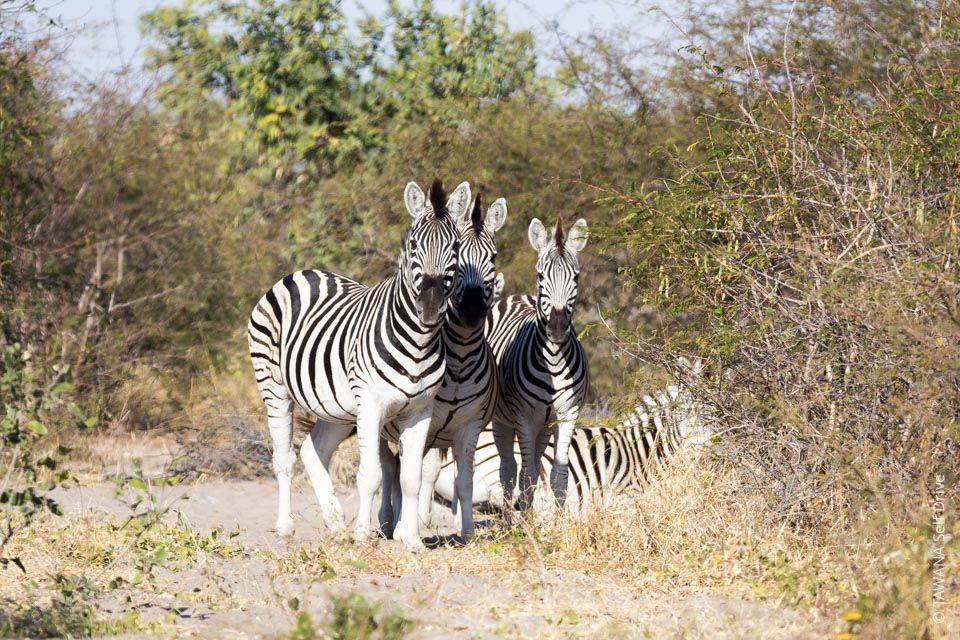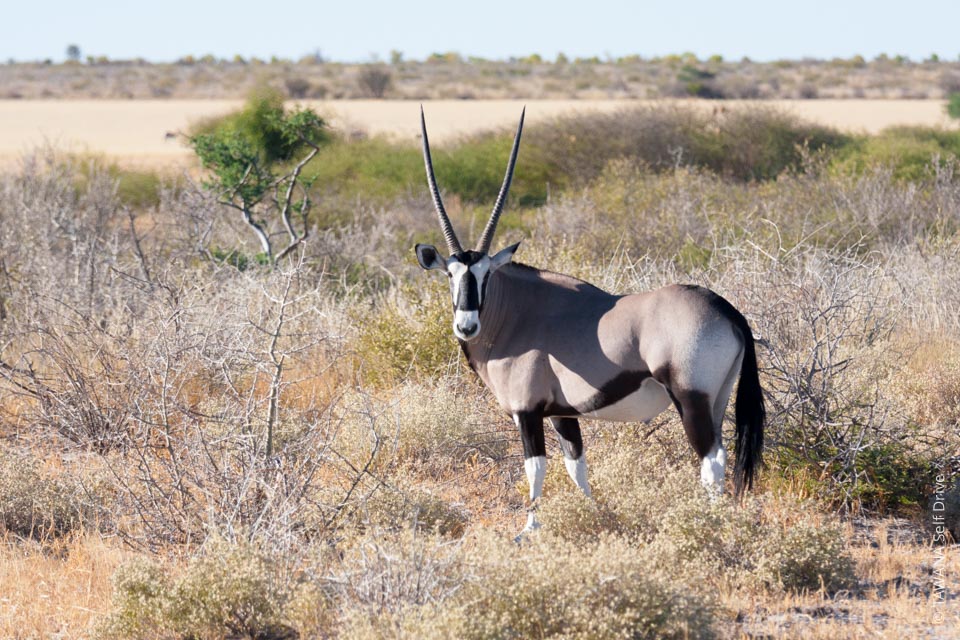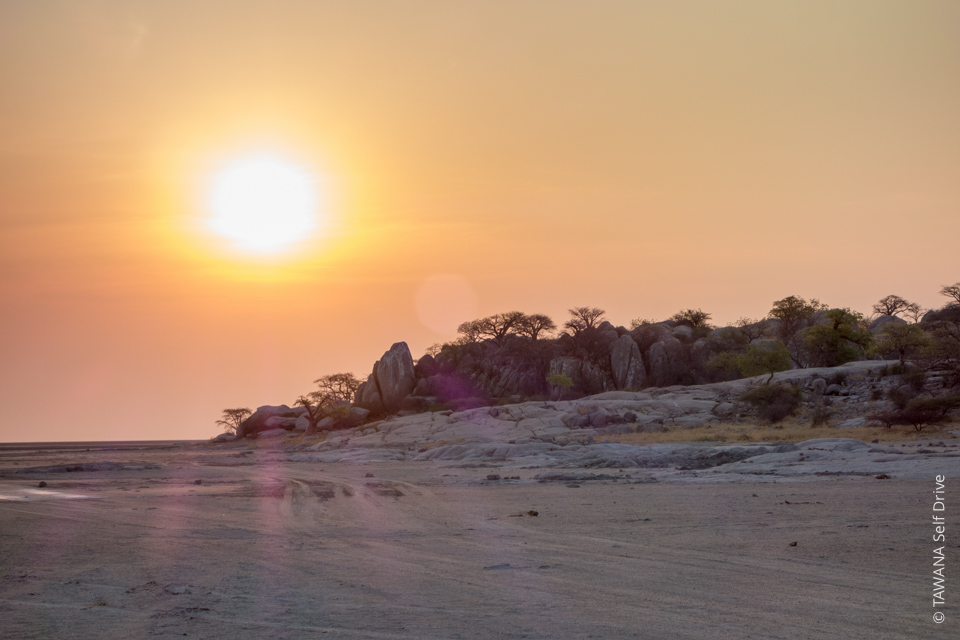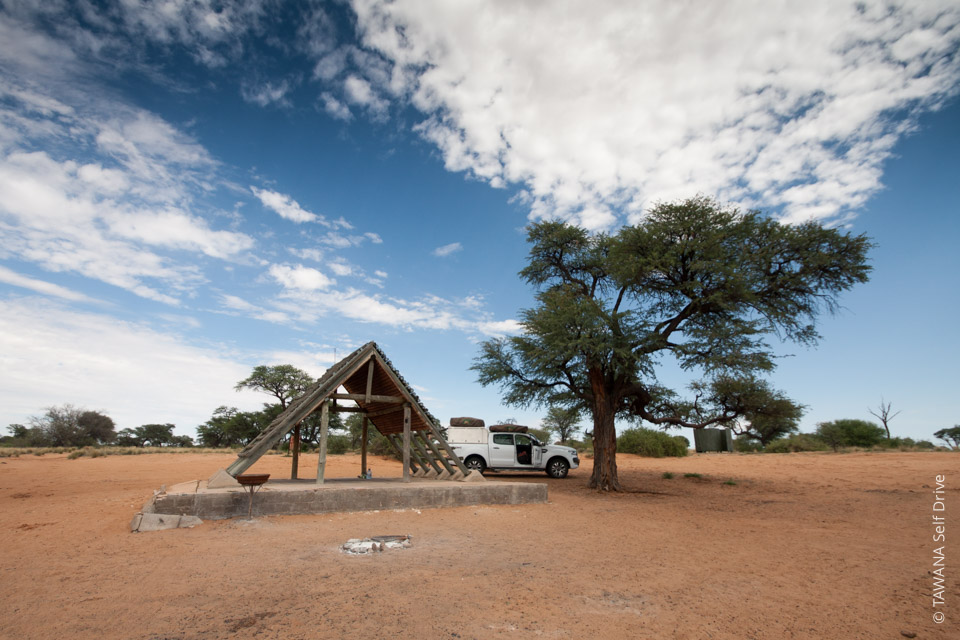
Kubu Island, Makgadikgadi Pans, Botswana
Self-Drive Safari Itinerary in Botswana
The Desert route
An adventurous self-drive safari in the Kalahari Desert and an invitation to explore the most remote and isolated regions of Botswana!
The desert Route : the most adventurous self-drive safari in the remote Kalahari
The desert route is an invitation to explore the most isolated areas of Botswana, from the Makgadikgadi pans to Central Kalahari, or up to the Kgalagadi Transfrontier park for the most adventurous!
This self-drive safari focused on the Kalahari part of Botswana will allow you to discover endless spaces such as the cracked ground of the salt pans, the vegetal desert of the Kalahari, the red dunes of the Kgalagadi and all the abundant wildlife existing in these arid environments where one could swear no life is possible.
Detailed itinerary
KASANE
The small town of Kasane has a location that is hard to beat, at the junction of 4 countries: Botswana itself, Namibia, Zambia and Zimbabwe. It is also at the entrance of Chobe National Park, one of the most beautiful in southern Africa.
Kasane is a great starting point for the water route. As well as an international airport with regular flights from Johannesburg in South Africa, the town has several supermarkets, cash machines, garages and petrol stations, which means you will have all the supplies and support you need before setting off.
Kasane is also a peaceful and delightful town, well worth relaxing in for a few days and making the most of the many activities on offer. These include the unmissable crossing over the Chobe river, which will give you an unforgettable first look at the wildlife of Botswana.
Accommodation
There are many accommodation types that are available in Kasane and the surrounding area whether in a lodge, self-catering housing, in a bush camp or ground camping.
Belonging to the great salt lake region, the Nxai pan and the Makgadikgadi national parks are like siblings. Their similarity lies in their landscapes alternating salty basins, shrubby plains and that they both lie on the wandering path of the great herbivores.
The fauna circulates freely between the two spaces which also have some specificities to offer: on the north side, the Baines baobab with pans covered with herbs whilst on the side lies the Boteti river and totally desolate pans.
NXAI PAN NP
Nxai Pan is interesting in many ways. The park is primarily home to permanent fauna including lions, giraffes, cheetahs and species adapted to more arid environments such as the springbok, otocyon or jackal. It is also a point of passage for migrant animals which rush in large numbers around the water point as soon as there is an arrival of the first rains. In this period, it is possible to see zebras in thousands but also a large herd of oryx and elephants. Your self-drive safari in this area of the Kalahari will be even more exciting during the rainy season but be careful to the conditions.
Apart from its fauna, the park is also known for the famous «Baines Baobabs» which derive their name from the explorer of the same name immortalized these majestically planted trees at the edge of a large basin in one of his paintings.
Road conditions
From Kasane, it takes a long day to reach Nxai Pan NP. The road is paved for the first 400 km, before becoming a gravel path to Makolwane Gate (20 km). The last 12 kilometers leading to the first campsite take place on a deep sandy track.
Accommodation
It is possible to camp south of the park, a few kilometers from the entrance but the experience will be more complete by spending the night in Baines Baobab. Water is available in the first campsite but the second does not have an infrastructure. This is also what makes it special.
Supplying
It is unavailable, the closest place will be Gweta to refuel.
MAKGADIKGADI NP
Makgadikgadi national park is perhaps one of the least known and visited in Botswana. It has some advantages like the insulation for those seeking the most complete immersion or the proximity of the south-eastern sections of the park, giving an excellent overview of the Ntwetwe Pan.
The fauna of Makgadikgadi consists of the most common species in Botswana, especially along the Boteti river which has an environment close to the northern regions. Zebras and wildebeest migrate from June onwards and there is a chance of seeing a few lions. By penetrating a little deeper into the park, you will also be able to meet rare and discreet animals like the brown hyena.
Road conditions
Located south of the road linking Nata to Maun, the access to the Makgadikgadi is made by deep sand trails that define the park.
Accommodation
There are two campsites in the park. Khumaga is the most comfortable, while Tree island is the most deserted and closest to the pans.
Supplying
Gweta, 45 km from the gate, is the nearest point of supplies for basic needs only.
It was not until 1998 that the Central Kalahari reserve was open to individual tourism and self-drive safari.
It is one of the most natural places in Africa, where fauna and flora have developed freely in the heart of the semi-arid region, which doesn’t rain more than 300 mm of water per year. However, it is not expected to discover sand dunes but rather a vast plateau stretching as far as the eye can see while covered with vegetation of herbs and shrubs, the definition of this typical plant desert.
Moreover, animals are not mistaken and gather here soon after the rainy season in order to benefit from the best pastures that the region has to offer. Whether later or this time in the dry season, the untouched Kalahari Desert will leave no one indifferent to its fauna, landscape and the almost magical atmosphere that reigns there. In order to be completely enchanted by the charms of Kalahari, we recommend that you should travel the northern half of the reserve for minimum of 5 days.
SUNDAY AND LEOPARD PANS
The Sunday Pan area is one of the prettiest in the CKGR. It is known for its regular presence of black maned lions, but its acacia often harbors many other animals including the oryx, gnous, kudu’s(antelope) and giraffes. The shrubs can also hide a few bat eared fox, jackals or honey badgers. The Sunday Pan waterhole is a must-see spot when the sun starts to set.
Road conditions
Through the Phuduhudu gate, 33 km of deep sand road followed by 180km of a paved road then 42km of deep sand road, then 58 km of alternating sand tracks as well as dirt track sands.
Note that the Khumaga ferry is irregularly available and that the journey through the gate is not assured.
Accommodation
The Sunday pan area has 4 campsites. CKSUN03 and CKSUN04 are the closest to the water points. CKSUN01 and CKSUN02 are further away but regularly visited by lions.
Supplying
It is advisable to make a refuel trip at Rakops before entering the reserve. The city has a small grocery store where water and food will be available. Please note that the gas station is supplied occasionally but has improved a lot since Puma got the management.
PASSARGE VALLEY AND TAU PAN
Passarge valley is a beautiful route that promises many encounters in relatively changing landscapes ranging from the shrubby vegetation typical of the Kalahari to open valleys and vast meadows, sometimes scattered with small tree islands. Tau pan is distinguished by its sets of acacia and the animals are very present around the pans of Phukwi, San and Phokoje.
Road conditions
There is an alternate of sometimes deep sand and dirt tracks.
If you choose an extension to the KTP, you can leave the CKGR via the Tsau Gate, northwest of the reserve. From the passarge valley take 100km to reach the gate, which takes about 5 hours.
Accommodation
From the passarge valley to Phokoje pan, you can choose from 5 campsites along the valley and the pan sides.
Supplying
Not available within the park.
PIPER PAN
Piper pan is the most mystical and remote place in the northern loop. Here the distance is really felt, the astonishing silence, isolation in its entirety and many animals wading gaily in immense plains, with an emerald color in the wet season and gold in dry season. For sure, it will be a highlight of your self-drive safari in the Central Kalahari!
Road conditions
Alternation of sandy tracks, particularly deep on the last 40 kms and dirt tracks.
If you choose the extension to the KTP, you can re-enter the CKGR via Xade Gate, west of the reserve then join the piper pan trail. From new xade off the reserve take 140 km to reach piper pan, this takes 6 hours.
Accommodation
There are two campsites in piper pan, one directly overlooking the plain and the other further inland.
Supplying
Unavailable within the park.
LETIAHAU VALLEY
The Letiahau valley is probably the most picturesque place in the CKGR. Here lie the chances of seeing the timid animals in the savannah such as cheetahs or brown hyenas. The Letiahau water point also attracts giraffes and other herbivores, lions are also often seen in this area too.
Road conditions
Alternating between sand and dirt trails.
Accommodation
Two campsites are available along the valley, called the Letiahau and Lekhubu. They are both in the wild.
Supplying
Unavailable within the park.
DECEPTION VALLEY AND DECEPTION PAN
Deception valley is worth the trip to the Kalahari. An ancient bed of a fossil river, the place takes its name from a mirage created by the clay basin giving an illusion of a pond filled with water. Deception pan usually fills up with water during the rainy season but quickly gives way to a cracked ground covered by red algae parched the rest of the year.
Road conditions
Alternating sand and dirt trails.
Accommodation
Deception valley is the largest area on the park with 10 campsites. The Kori camps are known for seeing/witnessing lions pass by the whole of deception and are sometimes frequented by leopards.
Supplying
Unavailable within the park.
After having had a small glimpse of the salty basins in the Makgadikgadi NP, the intention is to explore the whole region of the great parts that characterize the central east part of the country.
This 12000 km² desert terrain is a chain of salt-beached bowls, one of the largest salt marshes in the world, sand dunes and rocky islets of which the most popular is the Lekhubu island (or the Kubu Island).
Abandoned by men, one could easily think this is a hostile region, also lacking any wildlife. The animals are well present, especially during the wet season when the two largest basins Ntwetwe and Sowa, are supplied with water and their borders are covered with vegetation. The large herbivores, zebras and wildebeest invade the plains while impressive colonies of flamingos settle on newly formed lakes.
In the middle of this flat plain stands some of the massive baobabs of which the well-known are the Green’s and Chapman’s baobab trees to the south of Gweta.
LETLHAKANE
After a 5 days self-drive safari in the Central Kalahari, a refreshment break is necessary before continuing towards the heart of Makgadikgadi sections. Letlhakane is a very small town that has developed due to the three diamond mines that surround it. It has a gas station, garage for mechanical needs as well as basic water and food supplies.
Road conditions
Deep sand track for 60km to the intersection going to Rakops, then 120km of a paved road to Letlhakane.
Accommodation
Lodging solutions are not very developed. You will find a motel (Mikelele Motel), guest house (Grannys Guest House) and a hotel (Boteti Hotel).
Supplying
Letlhakane has an ATM, grocery stores and a shell station.
LEKHUBU ISLAND
From the Setswana meaning «ridge», Lekhubu island (or Kubu Island) is a rocky island 10m high and 1 km long, which have grown magnificent baobab trees, creating an unexpected and particularly photogenic set located on the edge of the Sowa Pan.Spending a night here, especially on the full moon is one of the magical and unforgettable moments that Botswana has to offer.
Road conditons
From Letlhakane to Mmatshumo village, the road is paved for 12km and continues with 23km of gravel road. Up to Lekhubu, the 47km of the road is slightly sandy.
Accommodation
It is only possible to camp at Lekhubu island. You must go to Lekhubu community office in mmatshumo village without any prior reservation to pay for the overnight stay.
Supplying
Unavailable
KGALAGADI TP
Established in 2002 and managed jointly by South Africa and Botswana, the Kgalagadi Transfrontier Park is a 37 000 km² open desert that preserves the migratory routes of animals, crucial to their survival in this arid environment.
The ¾ of the park is located on the Botswana side which has retained all its authenticity with very basic facilities and no possibility of refueling. On the South African side, the infrastructure is more developed and Nossob even has a small gas station and store.
Characterized by its red sand, the Kgalagadi is embellished with grassy vegetation and blooms as soon as the rains return. Despite the lack of natural water and artificial water points, the desert remains a living place populated with oryx, springboks, antelopes(bubales) and eland. Carnivores are also present including lions, cheetahs, leopards, brown hyenas and jackals. The KTP is also a world of small mammals and you will enjoy seeing cape foxes, ground squirrels, meerkats, bat-eared fox and honey badger(ratel).
The KTP is a 100% self-drive destination. Few tour operators offer circuits here.
Want to travel the entire east-west crossways and discover the wild and pure desert of Kgalagadi? Consult with us and we will help you define your itinerary according to your wishes, whether it’s to travel only to the regions of Mabuasehube or Kaa or to undertake the Wilderness Trail.
Some reasons to choose this route
Discover the country driving East to West through open landscapes, with the opportunity to encounter a rare wildlife
The raw and wild experience of an adventure itinerary in a 4×4, particularly suitable for experienced selfdrivers.
A possible extension to the Kgalagadi Transfrontier park for a complete expedition to the heart of the arid lands of Botswana
